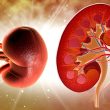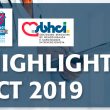Acute kidney injury is a common complication after transcatheter aortic valve replacement (TAVR) and is associated to increased mortality both short and long-term. In patients undergoing percutaneous coronary intervention (PCI) forcing diuresis with controlled hydration has shown to reduce the incidence of acute kidney injury in nearly 50%. However, this has not been tested in...
TCT 2019 | IVUS-XPL: 5-Year Follow-up for Angiography-vs. IVUS-Guided Angioplasty
Courtesy of SBHCI. The aim of this work, which was presented during the TCT 2019 Scientific Session and simultaneously published in JACC Intv, was to prove the benefit of intravascular ultrasound (IVUS) in angioplasty. The IVUS-XPL trial randomized 1400 patients with long coronary lesions (≥28 mm) to IVUS-guided angioplasty (n = 700) vs. angiography-guided angioplasty (n = 700). All procedures were...
TCT 2019 | COMPLETE: Sub-Study to Find Out Complete Optimal Revascularization Timing in STEMI
Courtesy of SBHCI. The COMPLETE study was carried out to assess the benefit of complete revascularization vs culprit vessel revascularization in the context of ST elevation acute myocardial infarction. This COMPLETE sub-study presented at TCT 2019 scientific sessions simultaneously published in JACC assessed the optimal timing of complete revascularization. The general study had already shown...
TCT 2019 | EURO-CTO: Results at 3 Years of CTO Recanalization vs. Optimal Medical Treatment
Courtesy of SBHCI. Between 16 and 18% of coronary artery lesions in patients with chronic stable CAD are chronic total occlusions (CTO). CTO revascularization could benefit symptomatic patients, but it remains unclear whether such complex procedure is safe in the long run, given the study outcomes on PCI in CAD so far. This study presented...
TCT 2019 | EXCEL: Left Main Coronary Artery Angioplasty with Favorable Results at 5 Years
Courtesy of Dr. Carlos Fava. Unprotected left main coronary artery angioplasty with drug-eluting stents has emerged as an acceptable strategy for a select group of patients, with results comparable to those of myocardial revascularization surgery at 2 or 3 years. However, beyond such term, we had no valid information. Researchers analyzed the 5-year follow-up results for the...
Should Interventional Cardiologists Be Involved in Acute Stroke?
According to this single-site study, published in J Am Coll Cardiol Intv., interventional cardiologists can safely conduct revascularizations in a setting of acute stroke, with high clinical and technical success. Cardiologists are taking on this traditional interventional neurology field simply due to the lack of interventional neurologists, who are thus unable to provide coverage 24/7,...
Best Conduits and Best Surgeons for the Best Outcome
Myocardial revascularization surgery is still one of the most effective treatment strategies against coronary disease. One of the most important advantages of surgery over angioplasty is the chance to reach complete revascularization. This has proven to improve the survival of patients and to reduce the number of cardiovascular events. The choice of conduit for the...
The Real Impact of Peripheral Artery Disease in TAVR
Courtesy of Dr. Carlos Fava. The real incidence of peripheral artery (PAD) disease in TAVR remains unclear. Different reports still estimate it is between 10 and 46%, but they have shown it has a negative impact in evolution. 51,685 TAVR patients were analyzed. 12,740 of these patients presented PAD (24.6%). PAD patients tended to be...
Angioplasty vs. Surgery in Lower Limb Ischemia
This analysis of data from an already published study, “Bypass Versus Angioplasty in Severe Ischemia of the Limb (BASIL-1),” confirms the superiority of bypass over balloon angioplasty, with or without stenting, in patients with chronic lower limb ischemia who require a femoropopliteal intervention. While analyzed interventions took place between 1999 and 2003 (a fact subject...
Mechanisms of Post PCI Persistent Angina
Angina persistence or recurrence after PCI can affect between 20 to 40% of patients in the short and mid-term. This might be true despite PCI optimization using FFR, intravascular ultrasound and the latest generation stents. This problem is associated with high healthcare cost, which can double in patients with recurrent or persistent angina compared against...





